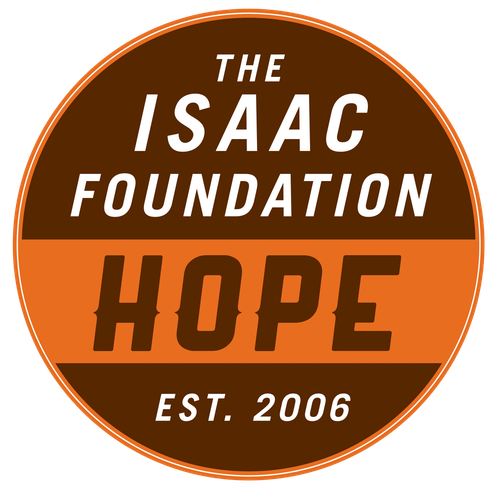 The question of whether Alberta Health will fund treatment for Aleena will be based solely on whether the province wants to pay the high cost associated with their decision. How do I know this? Well - if they were basing their decision on evidence based science alone, they would have rendered their decision by now - and that decision would have to be a YES. To support that claim, I thought I’d take the time to include some snippets from some of the finest MPS Researchers in the world. These quotes are taken directly from readily-available and reputable Journals, with sources included for further study. There is irrefutable proof that this treatment is effective. There is irrefutable proof that this treatment MUST begin at a very early stage. Delaying a decision on providing this treatment for Aleena is detrimental to her long-term health!
The question of whether Alberta Health will fund treatment for Aleena will be based solely on whether the province wants to pay the high cost associated with their decision. How do I know this? Well - if they were basing their decision on evidence based science alone, they would have rendered their decision by now - and that decision would have to be a YES. To support that claim, I thought I’d take the time to include some snippets from some of the finest MPS Researchers in the world. These quotes are taken directly from readily-available and reputable Journals, with sources included for further study. There is irrefutable proof that this treatment is effective. There is irrefutable proof that this treatment MUST begin at a very early stage. Delaying a decision on providing this treatment for Aleena is detrimental to her long-term health!
Here’s some things to ponder and share. It took me less than 1/2 day to do this review of the available scientific literature regarding the safety and effectiveness that ERT yields patients suffering from MPS VI. How it’s taken Alberta Health over 4 weeks to find this information is beyond comprehension. And if they didn’t find this information during their STEDT review, they haven’t done a thorough job evaluating this case at all! I should note that this is just a small sampling of the literature that is available on the subject, and every article I dug up promotes the same overall message - ERT is the best treatment for children suffering from MPS VI, it’s EFFECTIVE, and it must begin EARLY. One final note - all articles point to this treatment being SAFE. With all this clinical data available, Alberta Health must simply be weighing whether they want to pay to save Aleena or not, and shame on them if that’s the case.
Please read and share. #Treatment4Aleena
”Recently, a consensus panel of international experts in medicine, genetics and biochemistry drafted management guidelines for MPS VI. The expert panel recommended ERT, when available, as first-line therapy.” (Schlander, M. and Beck, M. Current Medical Research and Opinion, 2009)
“…initiating ERT at an early age is safe and improves overall morphology, clinical outcome, quality of life and the safety profile related to immune response. The main benefit was in scoliosis, joint range of movement, cardiac valves and facial appearance.” (McGill JJ, Inwood AC, Coman DJ, Lipke ML, de Lore D, Swiedler SJ, Hopwood JJ. Clinical Genetics, 2010)
“As ERT slows down the accumulation of GAG in cells and tissues, it is thought that early treatment might prevent or delay the development of irreversible disease manifestations and limit or prevent growth deceleration.” (Harmatz, P. Turkish Journal of Pediatrics, 2010)
“One recently published case control study assessed the impact of [ERT] in two siblings: one treated from the age of 8 weeks, one from 3.6 years. After 3.6 years of treatment with [ERT], the youngest child had a lack of scoliosis and preserved joint movement, cardiac valves and facial morphology, unlike the older sibling at the same age. The older sibling had improvements in joint mobility and cardiac valve disease after 3.6 years of treatment with [ERT].” (Harmatz, P. Turkish Journal of Pediatrics, 2010)
“…it seems desirable to start treating these patients at an early stage, before irreversible damage has occurred.” (Schlander, M. and Beck, M. Current Medical Research and Opinion, 2009)
“This therapy opens the door to a more proactive approach of managing the disease, i.e slowing down the accululation of GAG rather than alleviating the resulting clinical manifestations.” (Harmatz, P. Turkish Journal of Pediatrics, 2010)
“…conventional cost-effectiveness criterion currently in widespread use does not offer sufficient basis for rejecting reimbursement of expensive treatments for exceptionally rare disorders.” (Schlander, M. and Beck, M. Current Medical Research and Opinion, 2009)
“ERT positively affected mobility of the shoulder joint, the size of the liver and spleen, cardiac parameters, pulmonary function, certain domains of [quality of life], and the level of GAGs in the urine.” (Brands, M. Oussoren, E., Ruijter, G., Vollebregt, A., van den Hout, H., Joosten, K., Hop, W., Plug, I., Ploeg, A. Molecular Genetics and Metabolism, 2013)




 The question of whether Alberta Health will fund treatment for Aleena will be based solely on whether the province wants to pay the high cost associated with their decision. How do I know this? Well - if they were basing their decision on evidence based science alone, they would have rendered their decision by now - and that decision would have to be a YES. To support that claim, I thought I’d take the time to include some snippets from some of the finest MPS Researchers in the world. These quotes are taken directly from readily-available and reputable Journals, with sources included for further study. There is irrefutable proof that this treatment is effective. There is irrefutable proof that this treatment MUST begin at a very early stage. Delaying a decision on providing this treatment for Aleena is detrimental to her long-term health!
The question of whether Alberta Health will fund treatment for Aleena will be based solely on whether the province wants to pay the high cost associated with their decision. How do I know this? Well - if they were basing their decision on evidence based science alone, they would have rendered their decision by now - and that decision would have to be a YES. To support that claim, I thought I’d take the time to include some snippets from some of the finest MPS Researchers in the world. These quotes are taken directly from readily-available and reputable Journals, with sources included for further study. There is irrefutable proof that this treatment is effective. There is irrefutable proof that this treatment MUST begin at a very early stage. Delaying a decision on providing this treatment for Aleena is detrimental to her long-term health!